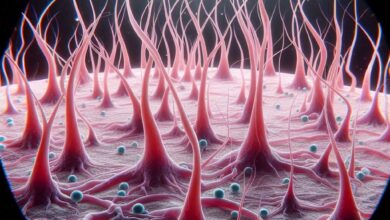First Signs of Hair Loss and When to Consider Treatment

Hair loss is a common issue that can affect individuals at various stages of life. Identifying the early signs of hair loss can help you take proactive steps to address the problem and explore treatment options. Here are some of the first signs that you might be losing hair and should consider hair loss treatment:
Early Signs of Hair Loss
- Thinning Hair on the Top of the Head
- Pattern: One of the most common signs of hair loss is gradual thinning on the top of the head. This can occur in both men and women. Men often notice a receding hairline or a thinning crown, while women may experience a widening of the part in their hair.
- Visibility: Pay attention to whether more scalp is becoming visible, especially when styling your hair or in photographs.
- Bald Spots
- Circular or Patchy: Some people develop circular or patchy bald spots. These spots can vary in size and may affect the scalp, beard, or eyebrows.
- Soreness or Itching: Sometimes, the skin in these areas may become itchy or painful before the hair falls out.
- Excessive Hair Shedding
- Daily Hair Loss: Losing 50-100 hairs per day is normal. However, if you notice significantly more hair than usual falling out, it could be a sign of hair loss. Check your pillow, shower drain, and hairbrush for an increase in shed hair.
- Telogen Effluvium: This condition causes hair to fall out more than usual and can be triggered by stress, illness, or hormonal changes.
- Receding Hairline
- M-Shaped Hairline: For men, a receding hairline often starts at the temples and creates an “M” shape. This is a hallmark of male pattern baldness.
- Temple Thinning: Women may also experience a receding hairline, but it is usually less pronounced and occurs along the frontal hairline.
- Visible Scalp
- Wider Part: For women, a noticeable sign of hair loss is a widening part. If your part is becoming wider over time, it may indicate thinning hair.
- Thinning Ponytail: If your ponytail is getting thinner or you need to wrap your hair tie more times than before, it may be a sign of hair loss.
- Overall Thinning
- Diffuse Thinning: This type of hair loss involves a general thinning of hair all over the scalp, rather than specific bald spots or patterns. It can be more challenging to notice but is often evident when the volume of hair decreases.
- Excessive Breakage
- Fragile Hair: Hair that breaks easily or appears frayed at the ends might be a sign of underlying issues leading to hair loss. This can be caused by over-styling, chemical treatments, or poor nutrition.
When to Consider Hair Loss Treatment
- Persistent Hair Loss
- Duration: If you have been noticing hair loss for several months, it’s time to seek professional advice. Hair loss that continues for a prolonged period may require treatment to prevent further loss and encourage regrowth.
- Family History
- Genetic Predisposition: If you have a family history of hair loss, particularly male or female pattern baldness, you may be more likely to experience hair loss yourself. Early intervention can help manage genetic hair loss more effectively.
- Psychological Impact
- Emotional Distress: If hair loss is affecting your self-esteem or causing emotional distress, it is important to address the issue. Consulting with a healthcare professional can provide both medical and emotional support.
- Noticeable Changes
- Significant Difference: If you or others notice a significant difference in your hair density, it might be time to consider treatment options. Early detection and treatment can improve the chances of successful hair regrowth.
Treatment Options
- Medications
- Minoxidil (Rogaine): An over-the-counter topical treatment that can help slow hair loss and promote regrowth.
- Finasteride (Propecia): A prescription oral medication for men that can reduce hair loss and stimulate regrowth by inhibiting DHT.
- Hair Transplant Surgery
- FUT and FUE: Surgical options like Follicular Unit Transplantation (FUT) and Follicular Unit Extraction (FUE) can provide permanent solutions by transplanting healthy hair follicles to bald or thinning areas.
- Non-Surgical Treatments
- Low-Level Laser Therapy (LLLT): Uses red light to stimulate hair follicles and promote growth.
- Platelet-Rich Plasma (PRP) Therapy: Involves injecting concentrated platelets from your blood into the scalp to stimulate hair growth.
- Lifestyle Changes
- Healthy Diet: Ensuring a balanced diet rich in vitamins and minerals can support hair health.
- Stress Management: Reducing stress through activities like yoga, meditation, or exercise can help prevent stress-related hair loss.
- Professional Consultation
- Dermatologist or Trichologist: Consulting a dermatologist or trichologist (a specialist in hair and scalp conditions) can provide a personalized treatment plan based on the underlying cause of your hair loss.
Conclusion Recognizing the early signs of hair loss and seeking timely treatment can make a significant difference in managing and potentially reversing hair loss. With various effective treatments available, it’s possible to address hair loss and maintain healthy hair. If you notice persistent hair loss or it begins to affect your well-being, consult with a healthcare professional to explore the best treatment options for your needs.




